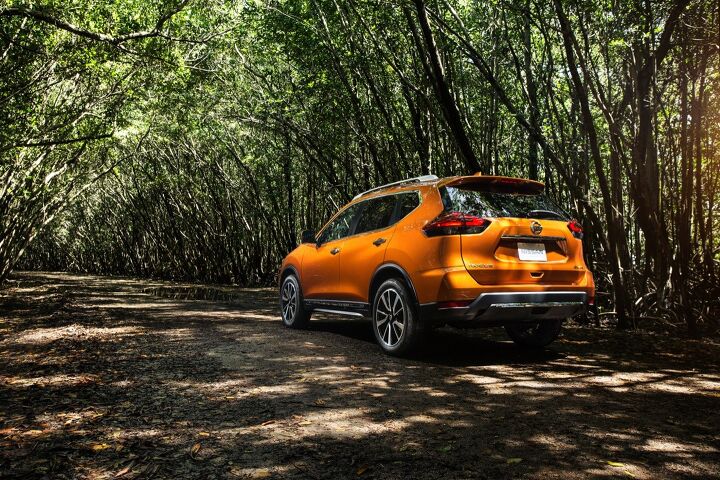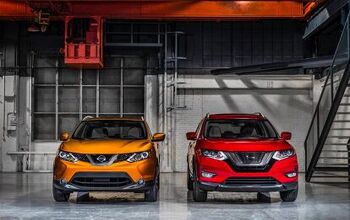The World's 20 Best-Selling Vehicles in 2017's First Half
The Ford F-Series was the planet’s best-selling line of new vehicles in the first half of 2017. Boosted by a 9-percent year-over-year global sales increase, the broad F-Series range produced 519,000 total sales in 2017’s first six months, according to JATO Dynamics, about 47,000 more sales than the second-ranked Toyota Corolla.
The F-Series wasn’t the only pickup truck on the list of Earth’s 20 most popular vehicles in 2017, to date. FCA’s Ram P/U lineup ranked 11th and the Chevrolet Silverado grabbed the 15th position. The United States market, on its own, accounts for the overwhelming majority of global sales generated by these full-size pickup families: more than 80 percent for the F-Series, just under 80 percent for the Ram, and nearly 90 percent for the Silverado.
Utility vehicles, meanwhile, earned seven of the top 20 positions. And while seven of the nine cars sold less often in the first half of 2017 than in the equivalent period in 2016, six of the seven crossovers reported year-over-year improvements.
These were the world’s best-selling cars in H1 2017. @Nissan X-Trail/Rogue, @Volkswagen Tiguan shine. C-Class, top-seller premium pic.twitter.com/7H9DEQyejK
— JATO Dynamics (@JATO_Dynamics) August 16, 2017
The third-ranked global best seller, Volkswagen’s Golf, generates less than 10 percent of its global volume in the United States. Although it’s been a success for American Honda, barely more than one out of every 10 Honda HR-Vs sold around the world are parked in American driveways. Only 5 percent of the Volkswagen Tiguan’s global volume is U.S.-generated.
All of these vehicles would be global best sellers even if they weren’t sold in the United States.
Many of America’s leading vehicles are nevertheless prominent figures in other markets.
The Nissan Rogue, for example, is America’s top-selling utility vehicle * so far this year, and it’s tops among utility vehicles around the world, as well, earning more than half its sales outside of America.
The Honda Civic is America’s top-selling car through the first seven months of 2017 and the Toyota Corolla ranks third in the U.S. — they’re the planet’s first and second-ranked cars. The Civic and Corolla produce slightly more than half and two-thirds, respectively, of their global volume in non-U.S. markets.
Moreover, the Mercedes-Benz C-Class is the top-selling premium brand car in America in 2017, and it’s the top-selling premium brand car in the world, as well. Eighty-four percent of global C-Class volume is generated outside the U.S.
[Images: Ford Motor Company, Nissan]
Timothy Cain is a contributing analyst at The Truth About Cars and Autofocus.ca and the founder and former editor of GoodCarBadCar.net. Follow on Twitter @timcaincars.
More by Timothy Cain
Latest Car Reviews
Read moreLatest Product Reviews
Read moreRecent Comments
- El scotto UH, more parking and a building that was designed for CAT 5 cable at the new place?
- Ajla Maybe drag radials? 🤔
- FreedMike Apparently this car, which doesn't comply to U.S. regs, is in Nogales, Mexico. What could possibly go wrong with this transaction?
- El scotto Under NAFTA II or the USMCA basically the US and Canada do all the designing, planning, and high tech work and high skilled work. Mexico does all the medium-skilled work.Your favorite vehicle that has an Assembled in Mexico label may actually cross the border several times. High tech stuff is installed in the US, medium tech stuff gets done in Mexico, then the vehicle goes back across the border for more high tech stuff the back to Mexico for some nuts n bolts stuff.All of the vehicle manufacturers pass parts and vehicles between factories and countries. It's thought out, it's planned, it's coordinated and they all do it.Northern Mexico consists of a few big towns controlled by a few families. Those families already have deals with Texan and American companies that can truck their products back and forth over the border. The Chinese are the last to show up at the party. They're getting the worst land, the worst factories, and the worst employees. All the good stuff and people have been taken care of in the above paragraph.Lastly, the Chinese will have to make their parts in Mexico or the US or Canada. If not, they have to pay tariffs. High tariffs. It's all for one and one for all under the USMCA.Now evil El Scotto is thinking of the fusion of Chinese and Mexican cuisine and some darn good beer.
- FreedMike I care SO deeply!


































Comments
Join the conversation
How the mighty have fallen: Approximate top 10 list from 1959: Chevrolet, Ford, Plymouth, Pontiac, Buick, VW, Oldsmobile, Dodge, Mercury. Today, not a single GM vehicle in the top 10, although they probably have several top 10 in terms of dealer inventory.
It speaks to the variety of the Chinese market that their first car is on #13. Lucky number? Anyway, GM is involved - not sure if that speaks pro or contra good reliability? It's a neat MPV though that has been build for almost eight years.